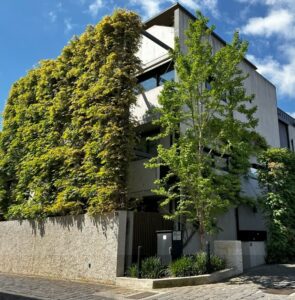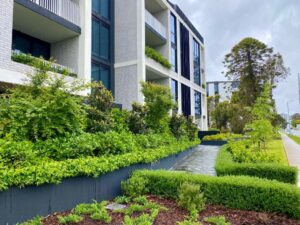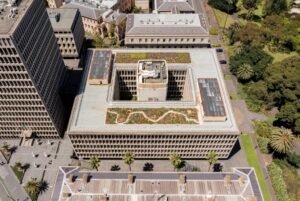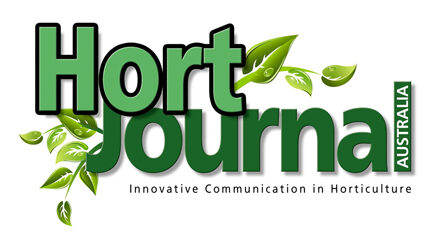
Can Practice Note 15 finally place a value on green?
By Michael Casey
As cities face rising environmental pressures, the Institute of Public Works Engineering Australasia (IPWEA)’s draft Practice Note 15 offers a timely framework to formally recognise green infrastructure as a core asset class, integrating nature into the heart of urban planning, financial strategy, and infrastructure resilience.
The Institute of Public Works Engineering Australasia (IPWEA) has taken the lead in developing a draft framework that has the potential to fundamentally shift the way green infrastructure is valued and managed across Australia, drawing on the knowledge and support of industry professionals, including members of the National Urban Green Infrastructure Roundtable and other experts from across the built environment sector. This document, titled Practice Note 15, provides a practical and strategic guide designed to assist councils, planners, engineers, and asset managers in formally recognising green infrastructure such as street trees, wetlands, urban forests, green roofs, and rain gardens, as legitimate service-delivering assets within infrastructure planning processes. This initiative represents much more than a technical guideline as it reflects a broader and long-overdue transition in thinking, whereby living systems are no longer considered decorative additions to our cities, but essential contributors to their liveability, resilience, and performance. For decades, green infrastructure has been excluded from long-term capital investment frameworks, overlooked in asset registers, and underfunded in ongoing maintenance cycles which has in some cases led to poor performance. Practice Note 15 presents a clear and structured pathway for shifting that narrative and establishing nature-based systems as a core component of public infrastructure management.

IPWEA’s recent article titled Integrating Green Assets into the Bigger Plan published in March 2025, highlights two of the most compelling reasons why green infrastructure must be taken seriously within infrastructure planning frameworks1. Firstly, traditional grey infrastructure contributes significantly to global environmental degradation, accounting for approximately 70 per cent of all greenhouse gas emissions worldwide and consuming nearly half of all material resources while generating substantial waste. Secondly, nature-based systems, when properly valued and strategically managed, can offer comparable if not superior performance to conventional engineered solutions, particularly in areas such as flood mitigation, urban heat reduction, stormwater management, and biodiversity support. The rationale is simple and powerful, if plants, soil, and water systems can deliver essential services, then they should be planned, funded, and maintained with the same discipline as pipes, pavements, and buildings.
IPWEA’s guidance outlines a practical three-step approach to embedding green infrastructure within existing asset management systems. The first step involves the development of a comprehensive inventory of green assets, supported by regular condition assessments that measure performance, health, and resilience. Local governments are already taking this approach seriously with the City of Marion in South Australia maintaining a detailed digital tree register that tracks species, condition, and scheduled maintenance. The City of Melbourne’s Urban Forest Strategy aims to double the city’s canopy cover by 2040, using this goal as a performance benchmark that is integrated into annual budget planning.
The second step focuses on life cycle planning and the establishment of service levels. By treating living infrastructure as assets that require forecasting and renewal, councils can better plan for the costs associated with establishment, growth, maintenance, and eventual replacement. Melbourne, for instance, has modelled the financial cost of sustaining its tree network over the coming decades, while Marion has adopted a structured block-pruning system that balances operational efficiency with ecological care.
The third step involves integrating the financial value of ecosystem services into the broader asset and capital planning process. Case studies from international contexts, such as the Town of Gibsons in Canada, have shown that stormwater ponds and riparian zones can be formally valued in the millions of dollars based on avoided infrastructure costs1 . Similarly, in the City of Grand Forks, the restoration of floodplains was shown to reduce potential damage costs by several thousand dollars per hectare, supporting an investment of over 50 million Canadian dollars to enhance and protect natural systems1.

All these principles have been embedded within Practice Note 15, which includes practical tools and templates for asset valuation, risk assessment, lifecycle cost modelling, and the setting of performance targets. The document was developed in close partnership with local government stakeholders, urban forestry professionals, engineers, and the wider community of practitioners involved in the National Urban Green Infrastructure Roundtable. This cross-sector collaboration has helped ensure that the guidance is grounded in real-world feasibility while remaining aligned with emerging best practice and policy direction. The note also aligns strongly with the ongoing work of the Australasian Green Infrastructure Network (AGIN), which continues to advocate for green infrastructure to be treated as a recognised asset class within government and industry frameworks.
Formally identifying green infrastructure as an asset class allows it to be registered, valued, maintained, and enhanced within standard asset management systems. This recognition gives green infrastructure a legitimate place in financial reporting, infrastructure investment strategies, and long-term urban planning. It also improves the ability of councils and agencies to attract co-investment from health, environmental, and community sectors, as the benefits of these systems often extend across multiple domains. This is not simply a matter of technical alignment, but one of financial equity and public accountability. Green infrastructure delivers real services, supports public health, and builds climate resilience, and therefore must be treated as a critical component of infrastructure delivery.
What is emerging through Practice Note 15, and the broader industry conversation, is a shared understanding that green infrastructure must be brought into the mainstream of asset management. This means moving beyond pilot projects and grant-funded trials towards embedded, repeatable, and measurable approaches that are integrated into the everyday work of councils, developers, engineers, and planners. When green infrastructure is valued appropriately, its benefits can be protected, enhanced, and expanded. When it is not, we risk losing the very systems that help our cities thrive under pressure.
IPWEA’s Practice Note 15 represents more than just a technical manual for urban greening. It is a clear and actionable invitation to embed nature into the fabric of our cities, not as an afterthought or aesthetic overlay, but as an essential infrastructure system that contributes to liveability, environmental performance, and long-term social and economic resilience. Recognising green infrastructure as an asset class is not only necessary, but also logical. This shift will allow local governments, infrastructure professionals, and policymakers to plan with confidence, fund with clarity, and maintain with consistency. In doing so, we move closer to a future where nature is no longer viewed as a ‘nice to have’ but more as a ‘must have’.
References
- Jenkins, D. (2025, March 18). Integrating green assets into the bigger plan. INSITE: Community News by IPWEA. https://insite.ipwea.org/integrating-green-assets-into-the-bigger-plan/
Further reading
Institute of Public Works Engineering Australasia (IPWEA). (n.d.). Asset Management for Green Infrastructure. https://www.ipwea.org/ipweacommunities/assetmanagement/am-green-infrastructure
Michael Casey
Director, Evergreen Infrastructure
Company Director, Australasian Green Infrastructure Network
Technical Panel, AIPH World Green Cities Awards
World Ambassador for World Green Roofs Day
E: michael@evergreeninfrastructure.com.au
